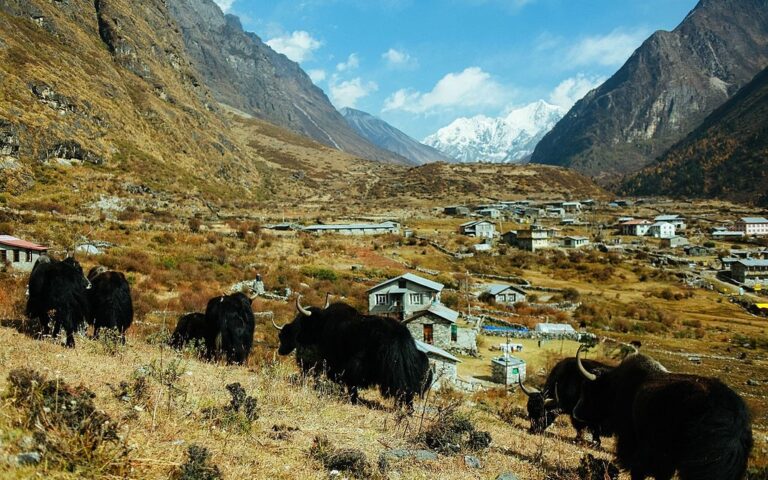
A single bench of Justice Prakash Man Singh Raut of the Supreme Court issued an interim order in the name of the Office of the Prime Minister and Council of Ministers, instructing it not to implement its decision of allowing generation of up to 250 MW of hydropower within core national park and reserve areas.
The interim order issued on Sunday has instructed the government not to implement the Council of Ministers’ May 27 decision to amend Article 5 and add Article 15 on the Strategy for Construction and Operation of Physical Infrastructure in Protected Areas, 2065 BS.
The then Minister of Forest and Environment, Prem Bahadur Ale, had amended the Strategy through the Council of Ministers in order to allegedly allow Yeti World Investment Company Pvt. Ltd. to generate electricity within the Langtang National Park.
The Council of Ministers on May 27 had amended Article 5 of the Strategy stipulates that no physical infrastructure should be constructed within national parks and reserves, that consent may be given to generate less than 1 MW of electricity for the benefit of local consumers, and that rivers and streams should be left open with at least 50 percent natural flow if and when generating below 1 MW electricity.
Article 5 was amended in manner to allow hydropower projects to generate between 1 to 250 MW of electricity within national parks, reserves, and it stipulated that only 10 percent of natural flow can be released when rivers and streams are closed to generate between 100 to 250 MW of electricity.
At that time, Yeti World had initiated the process to generate 310 MW electricity (Langtang River Reservoir) from Syaphru, Briddhim, Timure and Langtang in the inner part of the Langtang National Park.
The said site is suitable for biodiversity and rare wildlife, and has a tourist trail.
Although officials of the Department of National Parks were against the amendment saying that it was illegal and would tarnish Nepal’s achievements as well as international reputation for conservation, the then Minister Ale had forcibly taken the proposal to the Council of Ministers.
Advocates Bigyan Singh Bista and Basanta Joshi had filed a writ petition in the Supreme Court on June 17 against the amendment.
The Supreme Court has ruled that allowing electricity generation in the core areas of national parks and reserves can negatively affect national park and wildlife conservation efforts associated with the country’s natural resources and pride.
The order said, “It is not acceptable to violate natural values for one’s vested interests or economic gain. Air, water, forests and biodiversity are not for the consumption of only one generation of people. They should not be allowed to be ruined under any pretext.”
The order states that in the name of development, no one will be allowed to destroy nature and its components, and the value of nature’s gift cannot be compared with the benefits given by developmental activities.
“Even if there are great benefits from infrastructural development, activities that negatively affect or destroy nature and the environment should not continue,” the order said.
The Supreme Court’s order has been welcomed by conservationists and organizations working in the field of conservation.
The order also reminded that national parks and wildlife are the rare assets and heritage of the country, and the country’s policies state that it is the duty and responsibility of all to protect nature.
“Blocking 90 percent of water flow from rivers will adversely affect aquatic life and its habitat, ecosystem, wetland and even the environment required for wildlife,” the apex court’s order said.
“While constructing hydels in inner parts of national parks, stones, soil and pebbles have to be removed. Doing so could endanger rare wildlife. Explosives used in the construction process can cause loss of wildlife in the area while also adversely affecting geological and geographical conditions, climate, natural beauty, and the ecosystem.”
Nepal has 12 national parks, one hunting and one wildlife reserve, six conservation areas and 13 intermediate areas, occupying a total of 23.39 percent of the land area.
Similarly, the Council of Ministers had added 15th point to the 14-point Strategy for Construction and Operation of Physical Infrastructure in Protected Areas.
The 15th point allowed agencies to conduct a feasibility study – after acquiring permit from the Ministry of Forest and Environment — to operate hydropower projects and cable cars within national parks and reserve core areas.
The Supreme Court has also ordered not to implement the said point.






